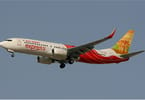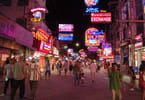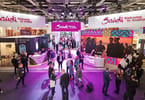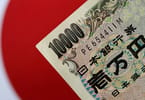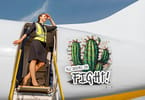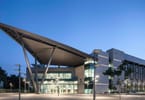The world’s most famous graffiti artist, Banksy, once said Melbourne’s street art was arguably the nation’s most significant contribution to the arts since the Aborigines’ pencils were stolen.
He is possibly biased, but Melbourne City Council also appears to value it highly, recently covering a Banksy stencil in Cocker Alley with perspex to prevent its being vandalised.
And a poll by Lonely Planet found Melbourne’s street art and lanes were the most popular cultural attraction in the nation, ahead of the National Gallery and Kakadu.
But Premier John Brumby yesterday slammed Tourism Victoria for including graffitied lanes in a recreated cityscape of Melbourne at Florida’s Disney World, insisting the government did not want a display that “promoted graffiti”.
“The department made a mistake. They’ve apologised to the minister and they’ll be withdrawing the display,” Mr Brumby said.
The Premier said the “nice part” of Melbourne’s lanes was the “European-type” style, not the graffiti. “It’s the openness, it’s the little restaurants, it’s the flower pots, window pots, all of those things. I don’t think graffiti is what we want to be displaying overseas. We’ve put through very tough laws to discourage graffiti – it’s a blight on the city.”
But the founder and director of Melbourne’s Citylights public art project, Andrew MacDonald, said the Premier confused graffiti vandalism and tagging with street art.
“Whether John Brumby and (Tourism Minister) Tim Holding like it or not, Melbourne’s street art is a big hit with tourists,” Mr MacDonald said. “They are behind the times and out of step with public opinion – I say bravo to Tourism Victoria for trying to express something which is genuinely happening here.”
Mr MacDonald said Hosier Lane, a popular graffiti site that Municipal Association of Victoria president Dick Gross has argued should be protected, was an “international landmark”.
“I would invite them to come down and spend an hour or two in Hosier Lane looking at how much people are loving the street art. It’s free and experiential. We don’t have many things like that in Melbourne.”
Mr MacDonald said street art was a worldwide movement. Last year the National Gallery in Canberra purchased its first collection of street art and a Banksy work on a London wall recently sold for £208,000 on eBay. “Not only do people like it, but there’s a market for it.”
The director of the Heide Museum of Modern Art, Jason Smith, said street art was an “enlivening contribution to our visual culture”. “One of the things I love about laneways, particularly Hosier Lane, is the way you see graffiti constantly being reworked and renewed.”
Graffiti project worker Paul Round said Mr Brumby’s comments were ridiculous. He said street art had transformed Melbourne’s lanes from scummy backwaters, populated by drunks and rubbish bins,
to tourist attractions. “Because of street art they are now a safe place to walk through.”
Port Phillip Mayor Janet Cribbes urged Mr Brumby and Mr Holding to rethink the decision.
Three years ago, she said, St Kilda Junction was a notorious graffiti hot spot and it cost VicRoads $60,000 a year to cover the tagging with ugly grey paint.
The City of Port Phillip organised local primary schoolchildren, indigenous people, street artists, kids from housing commission estates, and participants in the Whitelion juvenile justice program to repaint the underpass.
“The result is fabulous and attracts people from all over, as well as saving VicRoads money. It’s also made people feel safer walking through the catacomb of tunnels and ramps,” Ms Cribbes said.
“Writing on the wall is as old as civilisation itself. We should be encouraging legal street art and making a Melbourne a funkier, more interesting place to live in and visit.”
The director of the Heide Museum of Modern Art, Jason Smith, said street art was an “enlivening contribution to our visual culture”. “One of the things I love about laneways, particularly Hosier Lane, is the way you see graffiti constantly being reworked and renewed.”
Graffiti project worker Paul Round said Mr Brumby’s comments were ridiculous. He said street art had transformed Melbourne’s lanes from scummy backwaters, populated by drunks and rubbish bins,
to tourist attractions. “Because of street art they are now a safe place to walk through.”
Port Phillip Mayor Janet Cribbes urged Mr Brumby and Mr Holding to rethink the decision.
Three years ago, she said, St Kilda Junction was a notorious graffiti hot spot and it cost VicRoads $60,000 a year to cover the tagging with ugly grey paint.
The City of Port Phillip organised local primary schoolchildren, indigenous people, street artists, kids from housing commission estates, and participants in the Whitelion juvenile justice program to repaint the underpass.
“The result is fabulous and attracts people from all over, as well as saving VicRoads money. It’s also made people feel safer walking through the catacomb of tunnels and ramps,” Ms Cribbes said.
“Writing on the wall is as old as civilisation itself. We should be encouraging legal street art and making a Melbourne a funkier, more interesting place to live in and visit.”
WHAT TO TAKE AWAY FROM THIS ARTICLE:
- And a poll by Lonely Planet found Melbourne’s street art and lanes were the most popular cultural attraction in the nation, ahead of the National Gallery and Kakadu.
- Last year the National Gallery in Canberra purchased its first collection of street art and a Banksy work on a London wall recently sold for £208,000 on eBay.
- We should be encouraging legal street art and making a Melbourne a funkier, more interesting place to live in and visit.




